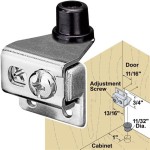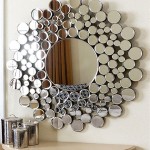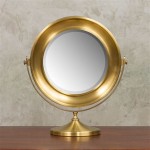Mirror iPhone to Samsung TV Without WiFi: A Comprehensive Guide
Mirroring an iPhone to a Samsung TV typically involves utilizing a WiFi network, primarily through technologies like AirPlay or screen mirroring features that rely on a common network connection. However, situations arise where a WiFi network is unavailable or unreliable. This article comprehensively explores alternative methods for mirroring an iPhone’s screen to a Samsung TV without the necessity of a WiFi connection. Several strategies will be detailed, including wired connections and the utilization of different hardware configurations.
Understanding the Limitations of WiFi-Based Mirroring
Standard screen mirroring protocols, such as Apple's AirPlay and Samsung's Smart View (which often utilizes Miracast), are designed to operate over a wireless network. These protocols depend on devices being on the same network to discover and connect to each other. When WiFi is absent, these methods become unusable. The absence of a stable or reliable WiFi network can lead to interrupted streams, lag, and generally a poor mirroring experience. Furthermore, older Samsung TV models may have limited or no built-in support for these wireless protocols. Therefore, alternative approaches are crucial for scenarios lacking WiFi availability.
Utilizing an HDMI Adapter for a Direct Connection
The most reliable method to mirror an iPhone to a Samsung TV without WiFi involves using a wired connection via an HDMI adapter. This approach bypasses the need for a wireless network and provides a stable, direct link between the devices. Apple offers a Lightning Digital AV Adapter, which connects to the iPhone's Lightning port and provides an HDMI output. This adapter allows for video and audio to be transmitted directly to the TV.
To use this method, the following steps should be followed:
- Acquire the Necessary Hardware: Obtain an Apple Lightning Digital AV Adapter (or a compatible third-party adapter). Also, ensure that an HDMI cable is available.
- Connect the Adapter to the iPhone: Plug the Lightning Digital AV Adapter into the Lightning port on the iPhone.
- Connect the HDMI Cable: Connect one end of the HDMI cable to the HDMI port on the adapter and the other end to an available HDMI port on the Samsung TV.
- Select the Correct HDMI Input: Use the Samsung TV’s remote to select the HDMI input corresponding to the port to which the HDMI cable is connected.
- Confirmation of Mirroring: The iPhone's screen should now be mirrored on the Samsung TV. Any content displayed on the iPhone will be visible on the TV screen.
This method offers a straightforward and reliable solution for screen mirroring, offering minimal latency and high-quality video and audio transmission. However, it's important to ensure the adapter is compatible with the specific iPhone model. Older iPhones may require different adapters.
Employing a Mobile Hotspot and Direct Cable Connection
Although the primary goal is to avoid WiFi, utilizing a mobile hotspot on the iPhone in combination with a direct cable connection presents a viable alternative in certain situations. This method does not rely on an external WiFi network, but rather leverages the iPhone's cellular data connection to create a localized network solely for the purpose of enabling specific mirroring functionalities that require a network connection, albeit a limited one.
The process is as follows:
- Enable Personal Hotspot: Activate the Personal Hotspot feature on the iPhone. This will create a local WiFi network broadcasted by the iPhone.
- Configure TV Network Settings: On the Samsung TV, navigate to the network settings and connect to the WiFi network created by the iPhone's Personal Hotspot. It's important to note that this connection is solely for enabling the necessary discovery protocols; no actual internet data is necessarily being transmitted through this connection.
- Establish a Direct Cable Connection: Simultaneously, connect the iPhone to the Samsung TV using the Lightning Digital AV Adapter and an HDMI cable, as described in the previous section.
- Initiate Mirroring (If Necessary): With both the WiFi connection established to the iPhone's hotspot and the HDMI cable connected, attempt to use the screen mirroring function on the iPhone (accessed through the Control Center). In some cases, the HDMI connection will automatically mirror the screen, while in others, establishing the hotspot connection assists in enabling or stabilizing the HDMI output.
This method can be used if the TV detects the iPhone through the hotspot to activate screen mirroring even though the predominant form of connection is the HDMI cable. The advantage of this method is that it can resolve compatibility issues when the direct HDMI connection is not functioning optimally on its own. Because the mirroring process heavily relies of the wired link, it will consume very little cellular data.
Third-Party Apps and Software Solutions (With Limited WiFi Usage)
While the focus is on avoiding WiFi, it's worth acknowledging that some third-party apps and software solutions exist that can facilitate mirroring with minimal reliance on a WiFi network. These applications often require an initial WiFi connection for setup and device discovery, but subsequently rely primarily on direct connections or alternative communication methods.
Example: Apps that support local network streaming.
Some apps are designed to stream video files or other media content from the iPhone to the Samsung TV via a local network connection. These apps typically require both devices to be on the same network initially for discovery purposes. However, once the connection is established, the streaming process can operate with minimal internet usage, relying primarily on the direct connection between the devices.
To implement this method:
- Install a Compatible App: Research and install a third-party app on both the iPhone and the Samsung TV that support local network streaming or mirroring with limited WiFi usage.
- Initial Setup via WiFi: Connect both the iPhone and the Samsung TV to a WiFi network (even a temporary one) for the initial setup and device pairing process. This allows the app to discover the TV and establish a connection.
- Configure Streaming Settings: Within the app, configure the streaming settings to prioritize direct connections or local network streaming over internet-based streaming.
- Disconnect from WiFi (Optional): Once the connection is established and the streaming settings are configured, it may be possible to disconnect both devices from the WiFi network. The app may continue to function using the direct connection or alternative communication methods.
The effectiveness of this method depends heavily on the specific app and its capabilities. Not all apps offer the ability to operate entirely without WiFi, and some may require a persistent connection for certain features. Thoroughly research and test the app to ensure it meets the requirements for minimal WiFi usage.
Checking Cable Integrity and TV Input Settings
Regardless of the method employed, verifying the integrity of the HDMI cable and confirming the correct input settings on the Samsung TV is crucial for successful mirroring. A faulty HDMI cable can cause intermittent connection issues, distorted video, or a complete lack of signal. Likewise, selecting the wrong HDMI input on the TV will prevent the iPhone's screen from being displayed. If experiencing issues, the following steps should be performed:
- Inspect the HDMI Cable: Examine the HDMI cable for any signs of damage, such as kinks, bends, or frayed wires. Try using a different HDMI cable to rule out a cable issue.
- Verify HDMI Connection: Ensure that the HDMI cable is securely plugged into both the adapter (connected to the iPhone) and the HDMI port on the TV.
- Confirm HDMI Input Selection: Use the Samsung TV's remote to cycle through the available HDMI inputs and select the one corresponding to the port to which the HDMI cable is connected. The port may be labeled (e.g., HDMI 1, HDMI 2).
- Restart Devices: Try restarting both the iPhone and the Samsung TV. This can often resolve temporary software glitches that may be interfering with the connection.
- Test with Another Device: If possible, test the HDMI cable and the TV input with another device (e.g., a laptop or Blu-ray player) to confirm that they are functioning correctly.
Confirming that the cable and input settings are correct is essential for ensuring a stable and reliable connection. A simple oversight in these areas can lead to unnecessary troubleshooting and frustration.
Troubleshooting Audio Issues
When mirroring the iPhone to the Samsung TV, audio issues may manifest, such as no sound or distorted audio. Addressing these problems requires a systematic approach to identify and resolve the underlying cause. Common causes include incorrect audio settings, cable issues, or software glitches.
The following steps should be pursued to troubleshoot Audio issues:
- Verify Volume Levels: Ensure that the volume is turned up on both the iPhone and the Samsung TV. Check for muted audio settings on both devices.
- Check Audio Output Settings: On the iPhone, navigate to the audio output settings (typically found in the Control Center) and confirm that the audio is being routed to the HDMI output. Some iPhones may offer options to select the audio output source.
- Adjust TV Audio Settings: On the Samsung TV, navigate to the audio settings and verify that the correct audio input is selected. There may be options to adjust the audio output format (e.g., PCM, Dolby Digital).
- Inspect HDMI Cable: A faulty HDMI cable can sometimes cause audio issues. Try using a different HDMI cable to rule out a cable problem.
- Restart Devices: Restarting both the iPhone and the Samsung TV can often resolve temporary software glitches that may be affecting the audio output.
By systematically checking these audio settings and connections, most audio-related issues can be resolved. In some cases, updating the firmware on the Samsung TV may also address compatibility issues with the iPhone's audio output.
Considering MHL Adapters (For Older Samsung TV Models)
For older Samsung TV models that do not natively support HDMI, a Mobile High-Definition Link (MHL) adapter may be a viable alternative. An MHL adapter allows the iPhone to connect to the TV via the TV's MHL-enabled HDMI port, transmitting both video and audio. It is vital to consult the Samsung TV's user manual to ascertain whether it supports the MHL standard. If the TV is compatible, an MHL adapter compatible with the iPhone's Lightning port can be acquired.
The Connection Process is:
- Obtain an MHL Adapter: Purchase an MHL adapter compatible with the iPhone’s Lightning port and the Samsung TV’s MHL-enabled HDMI port.
- Connect the MHL Adapter: Plug the MHL adapter into the Lightning port on the iPhone.
- Connect the HDMI Cable: Connect one end of the HDMI cable to the HDMI port on the adapter and the other end to the MHL-enabled HDMI port on the Samsung TV.
- Power the MHL Adapter: MHL adapters typically require an external power source. Connect the adapter to a USB power adapter and plug it into a power outlet.
- Select the Correct HDMI Input: Use the Samsung TV’s remote to select the HDMI input corresponding to the MHL-enabled HDMI port.
The iPhone's screen should now be mirrored on the Samsung TV. MHL adapters provide a workaround for older TV models that lack standard HDMI connectivity. However, it is crucial to ensure compatibility between the adapter, the iPhone, and the TV before purchasing an MHL adapter.

How To Mirror Iphone Tv Without Wifi 2 Easy Ways

How To Screen Mirror Iphone Samsung Tv Without Wifi No Chrome Cast Apple 2024

How To Mirror Your Iphone Tv Without Wi Fi

6 Free Ways To Mirror Iphone Samsung Tv Without Apple

How To Screen Mirror Iphone Samsung Smart Tv

2024 Guide How To Mirror Phone Tv Without Wifi

4 Easy Ways To Mirror Iphone Samsung Tv For Free

Answered Can You Screen Mirroring Without Wi Fi

How To Screen Mirror Iphone Samsung Tv Without Airplay

Best Ways On How To Mirror Iphone 11 Samsung Tv







